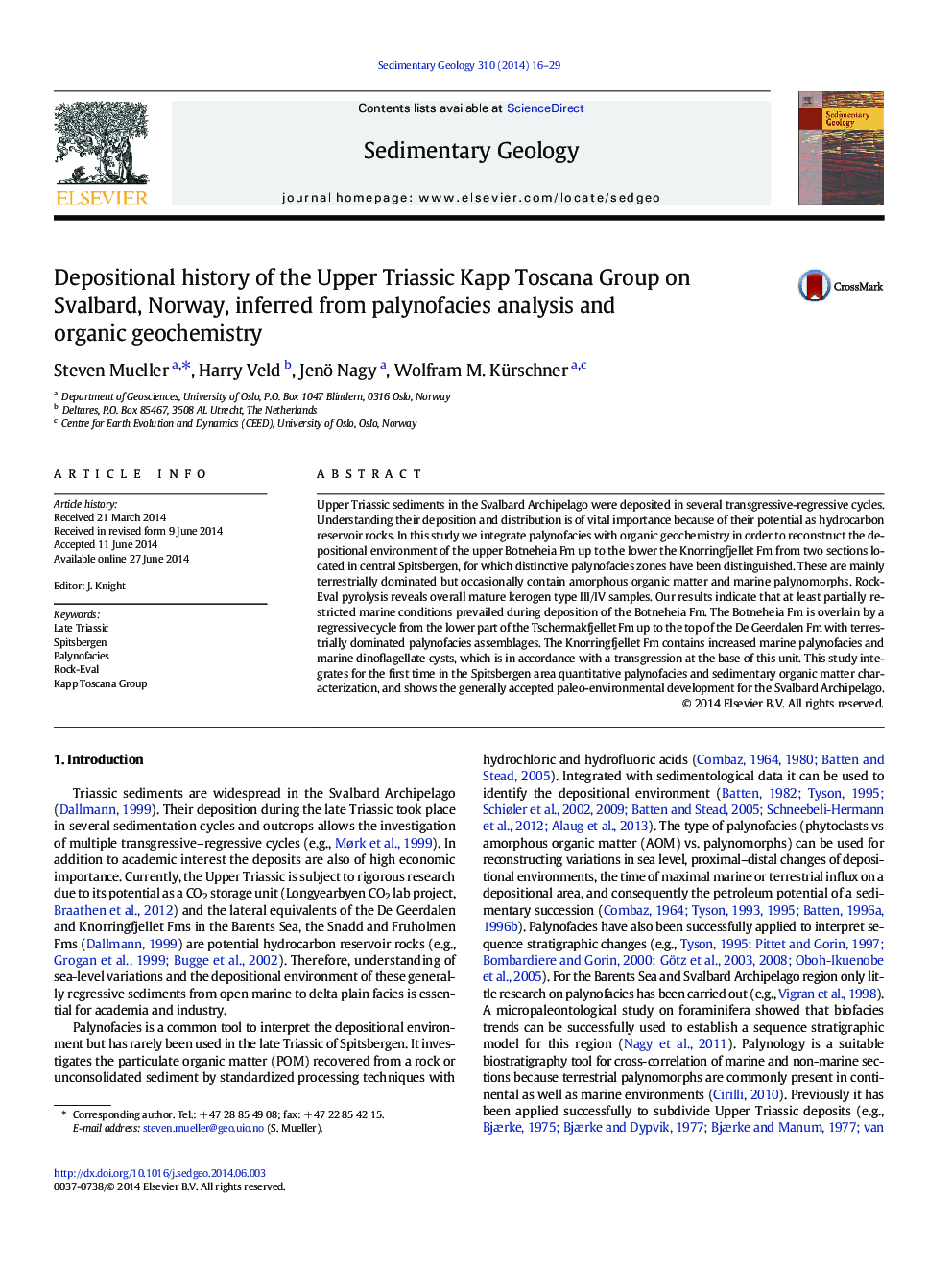| Article ID | Journal | Published Year | Pages | File Type |
|---|---|---|---|---|
| 4689376 | Sedimentary Geology | 2014 | 14 Pages |
•We analyze the palynofacies of two Upper Triassic sections from central Spitsbergen.•Results are in agreement with previous studies of a regressive depositional trend.•All formations are dominated by terrestrial assemblages with some marine influx.
Upper Triassic sediments in the Svalbard Archipelago were deposited in several transgressive-regressive cycles. Understanding their deposition and distribution is of vital importance because of their potential as hydrocarbon reservoir rocks. In this study we integrate palynofacies with organic geochemistry in order to reconstruct the depositional environment of the upper Botneheia Fm up to the lower the Knorringfjellet Fm from two sections located in central Spitsbergen, for which distinctive palynofacies zones have been distinguished. These are mainly terrestrially dominated but occasionally contain amorphous organic matter and marine palynomorphs. Rock-Eval pyrolysis reveals overall mature kerogen type III/IV samples. Our results indicate that at least partially restricted marine conditions prevailed during deposition of the Botneheia Fm. The Botneheia Fm is overlain by a regressive cycle from the lower part of the Tschermakfjellet Fm up to the top of the De Geerdalen Fm with terrestrially dominated palynofacies assemblages. The Knorringfjellet Fm contains increased marine palynofacies and marine dinoflagellate cysts, which is in accordance with a transgression at the base of this unit. This study integrates for the first time in the Spitsbergen area quantitative palynofacies and sedimentary organic matter characterization, and shows the generally accepted paleo-environmental development for the Svalbard Archipelago.
